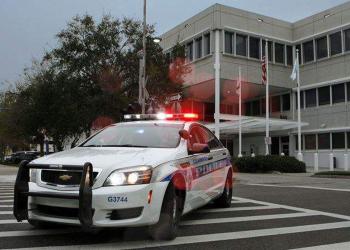Operation of Police Vehicles
RC Phillips, DDA (Ret.)
October, 2021
Under former statutes governing operation of motor vehicles, where it was provided that exception respecting emergency vehicles should not include primary regulation requiring “due regard for the safety” of public, only reasonable interpretation of act as whole was that because of public necessity for operation of such vehicles in cases of emergency, operators were relieved from general rules of road applicable to other vehicles but that arbitrary exercise of those privileges was not excused. (Armas v. Oakland (Cal. App. Nov. 24, 1933), 135 Cal. App. 411.)
A police vehicle, even if within the exemption from speed limitations, must be operated with due regard for the safety of travelers and the driver is not absolved from the consequences of an arbitrary exercise of privileges pertaining to such a vehicle (Vehicle Act of 1923, § 132). (Spencer v. Schiffman (Cal. App. Jan. 19, 1932), 119 Cal. App. 746.)
Giving signal does not relieve the driver of an emergency vehicle from responsibility for driving without due regard for the safety of others or for an arbitrary exercise of his privileges. An arbitrary exercise of the privileges granted to fire trucks, failure to give due warning, and to drive with due regard for safety could be found from evidence that a truck driver knew intimately a traffic officer, who could not run and walked with a limp, and whom he saw clearly, but drove his truck into a sudden arc without siren signal to hit the crippled officer, who vainly attempted to avoid the impact. (Cavagnaro v. Napa (Cal. App. June 30, 1948), 86 Cal. App. 2d 517.)
The duty of the driver of an emergency vehicle to drive with due regard for the safety of others is met where a suitable warning of his approach is given by siren and red light. (Goldstein v. Rogers (Cal. App. July 30, 1949), 93 Cal. App. 2d 201.)
Driver’s duty to have due regard for safety of all persons using highway applies even to person who by his own prior negligence may have placed himself in a position of peril. (Washington v. San Francisco (Cal. App. Feb. 17, 1954), 123 Cal. App. 2d 235.)
“Due regard” clause requires operator of emergency vehicle to give suitable warning to afford other users of public highways opportunity to yield the right of way; he does not meet this requirement if he does not give required warning until collision is inevitable. In action for personal injuries sustained by two policemen when their patrol car was struck from rear by defendant’s automobile while they were engaged in stopping another automobile for investigation, wherein court instructed jury that police car was authorized emergency vehicle, question whether plaintiff driver showed “due regard for the safety of all persons using the highway” was properly submitted to jury in view of conflicting evidence as to whether he turned on red roof lights soon enough to warn defendant to stop his vehicle or yield right of way. (Witt v. Jackson (Cal. Dec. 4, 1961), 57 Cal. 2d 57.)
While driver of emergency vehicle, such as a municipal fire truck, may be guilty of wilful misconduct in driving the vehicle through a mechanical “Stop” sign without sounding a siren, it is not necessary to prove any more than negligence, giving due regard to the particular circumstances involved, in an action against the municipality for personal injuries arising out of a collision of an automobile and the fire truck. (Isaacs v. San Francisco (Cal. App. Mar. 23, 1946), 73 Cal. App. 2d 621.)
Instruction that expression “with due regard for the safety of all persons using the highway” means only that driver of vehicle must by suitable warning give others reasonable opportunity to yield right of way, is proper. (Davidson v. County of Marin (Cal. App. 1st Dist. Dec. 19, 1956), 147 Cal. App. 2d 54.)
While motorcycle traffic officer in pursuit of speed violator was exempted by Vehicle Act of 1923, § 120, from speed limitations, he had no right of way over intersections unless, in accordance with former § 132(b), his siren was continuously sounded, and furthermore he had to drive with due regard to the safety of other travelers. (Russell v. Smith (Cal. App. Mar. 12, 1936), 12 Cal. App. 2d 399, 55.)
n action arising out of intersection collision of automobile with ambulance responding to an emergency call, this section did not apply and the driver of automobile, having green light to proceed into intersection, was not required to yield right of way where evidence sustained implied findings of jury that ambulance did not give an audible signal by siren as was reasonably necessary and did not display lighted red lamp visible from front, and that its operator did not drive with due regard for safety of other persons using highway. (Chastain v. Rook (Cal. App. Jan. 25, 1954), 122 Cal. App. 2d 761.)
Gov C § 845.8, providing that neither a public entity nor a public employee is liable for any injury caused by an escaping or escaped prisoner or arrested person, or a person resisting arrest, immunized police officers from liability for injuries sustained by a motorist when her car was broadsided by a vehicle being pursued by the officers for speeding. The immunity is not limited to employees driving with due regard for the safety of all persons using the highways Veh C §§ 21055 and 21056 only establish driving standards for emergency vehicles, they do not set rules for immunity. Even if the driver of an emergency vehicle does not comply with § 21056, only the public entity may be liable for the resultant injury. (City of San Jose v. Superior Court (Cal. App. 1st Dist. Apr. 10, 1985), 166 Cal. App. 3d 695.)

